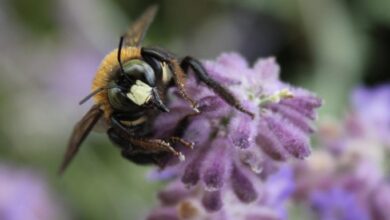Beekeeping: SEASONAL MAINTENANCE WORKS

In other Articles we have talked about the family of bee, In This article Let’s talk about SEASONAL MAINTENANCE WORKS IN Beekeeping

In beekeeping, a year’s worth of work is divided into entirely interconnected phases. The correct definitions and research conducted in the prior time are used to accomplish success in a year’s worth of producing, breeding, and maintenance activity.
The queen bee, the bee population, and the winter honey stock before the winter with the applications made in the fall determine the vigor and wintering of the colonies in the spring. By taking all these precautions in the fall, colonies that can enter the winter with a sufficient number of young bees will be able to enter the spring strong and healthy.
Choose an apiary location for beekeeping :

Bees can overwinter in open regions as well as in apiaries, which can be open in front and closed to the north, east, and west from autumn to spring. Features to take into account when choosing a wintering location include the north’s closed, open, porous base, and water-repellent structure.
The choice of apiary location during the production time is particularly significant because it is for production purposes in roaming beekeeping. Before the bees are relocated, a research visit should be made to the area, and the region’s precipitation, plant features, growth, and honey production should be assessed. Knowing the state of the nectar resources is just as crucial in this case as resource diversity. Instead of sources with a limited number of kinds, regions with a high variety of nectar sources should be picked, taking into account various climatic conditions.
The location chosen for the producing area’s land structure is also crucial. Because the length and timing of the flowering period of the plants in the area are influenced by the variation in altitude and direction. Bees will have a longer time finding a supply of nectar and pollen in a flight region with broken topography.
Once more, care should be made to find locations for these apiaries that are protected from the wind, especially protection from the north, away from noise, traffic, and cars.
Opening the Hives and Working in the Bee: The first practice in beekeeping that should be taken into consideration is to take care of bee protection when walking and working in the apiary without damaging the bee.
Taking these applications in beekeeping;
1. No one should enter the apiary with smells from outside.
2. We should use caution when dressing in accordance with the task we will undertake on the bee (mask, gloves if necessary, dark colored and very thin clothes should not be worn)
3. The bellows should always be ignited before the hive is opened, and it should never be opened without one.
4. One should be courteous and work carefully when opening the hive.
5. The frames should not be moved or separated from one another, or the colony’s internal order within the hive should be preserved.
6. In order to prevent looting, the work of the opening hive should be finished and closed swiftly throughout the work. This is especially important at times when the nectar flow is low.

Rental of bees for agricultural pollination is another common way for beekeeping to make money. Honeybees can efficiently pollinate hundreds of different plants as they gather nectar and pollen for the colony thanks to their bodies being covered in branching, pollen-snagging hairs. The pollination of almost 90 different crops in our nation, including apples, alfalfa, blueberries, cotton, and cucumbers, depends at least in part on bees. An astounding $14 billion in extra agricultural output is attributed to honeybee pollination each year, according to estimates.







